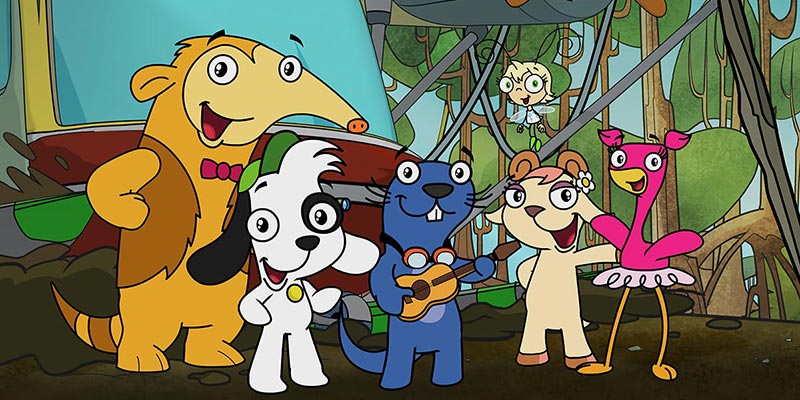Joy Rosen and Lisa Olfman co-founded Toronto-based Portfolio Entertainment in 1991 with a focus on the production and distribution of children’s programming before expanding into primetime content. Over the years since, the pair have witnessed first-hand the evolution of the industry, which has brought many opportunities as well as challenges.

A positive development in the sector at present is the increasing focus on diversity and inclusion in children’s programming – a welcome one for Rosen and Olfman, who remember coming up against gender discrimination just two decades ago.
“Twenty years ago we were still being told by networks that the shows had to have boy leads in them because the boys ‘controlled the remote’ and if a boy and girl were watching together you couldn’t have girl lead characters because the boys weren’t interested in that,” Rosen recalls.
When Rosen and Olfman started out they too faced discrimination as women, from male executives who wouldn’t give them the time of day. “When we started our business, as soon as we walked through the door the bank manager did everything possible to dissuade us from starting our company. We didn’t ask his advice. We were starting our business. We had a business plan. We knew what we wanted to do,” Olfman says.
“At the moment, diversity is the name of the game in every way,” Rosen adds, highlighting Portfolio’s cartoon Hero Elementary, which centres on a character with autism. “Inclusiveness is going to be the next catchphrase because diversity is there and now it’s about ensuring everybody can see themselves on screen in kids’ content.
“The other thing that’s interesting is that it’s not just about seeing diverse characters on screen but about having diverse characters in the writers’ room, so you’re not just paying homage to diverse characters but actually bringing diverse voices into the creative process to make it a more authentic story.”
Improvements in gender diversity have additionally extended to the adult animation space, Rosen notes, adding that adult cartoons also now reach a wider age range than they used to.
“When adult animation started, it was very much geared towards a young male audience, aged around 18 to 30. Now we’re seeing a whole range of content that appeals to more of a family audience, as well as series that are geared more towards women. We’re developing a series with two female leads and while I think men will watch it too, it is really geared towards the same audience that watches shows like [Comedy Central sitcom] Broad City and female-led comedies. It’s kind of like a [BBC comedy-drama] Fleabag-type animated show,” she says.
“It’s interesting to see the maturation of the adult animation industry, that it’s no longer just college boys who watch it and that it’s targeting a much broader circle. The stories are getting much more nuanced as well, with a deeper level of drama and comedy and less gag-driven.”
Another recent development for the animation industry has stemmed from the Covid-19 pandemic, which Olfman says has allowed Portfolio to expand its reach through remote working.
“What Covid-19 has done on the positive side for us is allowed us to look at how we can work differently. The hybrid model of physical space versus remote space lets us access talent that we might not have locally that we can now expand our reach to. I was probably one of the people who said we all had to be together in order to produce the best animation possible. Now what I’m seeing is that we’ve been very successful producing remotely,” she says.
“We do try to come together around launching shows so that we have a time where we’re face-to-face – there is definitely nothing that replaces face-to-face, but you don’t need to do it on a daily basis.”
Being able to access talent globally goes hand-in-hand with the influx of global streamers, Rosen adds, which in addition to evolving production has also helped evolve the distribution sector.
“It was almost like a perfect storm when the streamers hit; we truly became a global village,” she says. “When Lisa and I first started our business, international distribution was a new thing. Most countries had their own content and then would buy big American shows or big British shows, but there wasn’t really much of a distribution industry. It was really owned by the Americans and the British who had content that went around the world and everything else was local.
“What the streamers have done is turn us into a global industry where you can have just one buyer [who buys global rights]. International distribution is almost a waning industry in many ways because we’re really going global now.”
Olfman adds: “Thirty years ago global distribution was such a unique thing. When we started the company we wanted to produce content that we felt would work globally, so Joy set up a distribution arm and we started to attend all of the global markets that existed at that time. We always had that vision and mission, which was to produce content that could be sold globally.
“Today, though, as a result of the streamers, it’s becoming in some ways a model that is absolutely required in order to stay relevant to the marketplace.”

